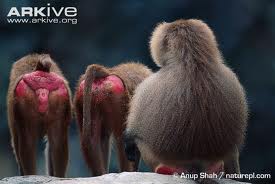High Altitude
High altitude reduces the availability of oxygen and causes hypoxia which negatively effects the survival of humans. Because the atmosphere is less dense in high altitudes, the air pressure is 30% lower than the air pressure that is available in sea level. Since the air pressure is lower, it makes it more difficult for oxygen to enter our vascular systems and causes hypoxia. Some symptoms of hypoxia include: difficulty doing physical activities, inability to memorize things or think clearly, distorted vision and loss of appetite. Hypoxia is especially dangerous for pregnant woman and child birth. In other words, hypoxia increases risks of miscarriage, mortality, low birth weight and premature birth. High altitude makes it more difficult for fetus to get enough oxygen while in the womb. Babies are not the only ones who can be affected by high altitude. In fact hypoxia affects human physiological system such as the brain, heart and lungs. Since our body is not equipped to handle a big climate change experienced in high altitude, it becomes more sensitive to health issues.
Short-term adaptations:
In order to adjust to high altitude, the heart has to pump harder and cause an increase in respiration and heart rate. Consequently, individuals who have heart issues will experience more stress when in high altitude. In order to adapt to the new conditions, our bodies will produce more red blood cells and also capillaries to carry the required amount of oxygen. Furthermore, the lungs stretch out to facilitate osmosis of oxygen and carbon dioxide. Drinking more water helps to avoid moisture to be evaporated quickly from our lungs and skin.
Facultative adaptation:
In order to decrease the level of stress for the body to produce more blood cells and capillaries to carry oxygen, our body can produce more hemoglobin (facultative adaption). I think consumption of food that contains Iron vitamin is recommended because Iron facilitates the production of hemoglobin in the body.
Developmental adaptation:
Group of people who live in high elevations are genetically more suited to pressure in high elevations and they pass their genes to the next generation. Natural selection is responsible for the DNA adaptation. In other words, generation after generation the individuals who adapt to the environmental changes continue living and give birth to the next generation. However, individuals who are not able to adapt, gradually go on extinction. The individual who live at higher altitudes tend to have larger lung capacities and larger hearts to get more oxygen. These individuals produce more hemoglobin which enables them to breath faster and carry more oxygen to the rest of the body.
Cultural adaptation:
Individuals who have hobbies such as climbing and hiking may use tools such as oxygen tanks to help them with breathing. The available oxygen enables them to climb higher without experiencing hypoxia. Besides that, having an oxygen tank reduces the need for more blood cells and capillaries to carry more oxygen. Drinking a lot of water (in daily diet) is recommended for hikers and climbers to replace the water reduction from their skin and lungs.
The risk of heart disease in individuals who live in high elevation is in half. This means that their body works harder to pump and it helps strengthen the heart and increase body endurance. Furthermore, individuals who live in high altitudes usually burn more calories and lose their appetite, consequently they lose weight.
I think studying human variation by looking at the environmental influences (and biology) on adaptations is more scientific and unbiased. I believe race is a cultural and social construct and uses biased explanations to define human variation.

















